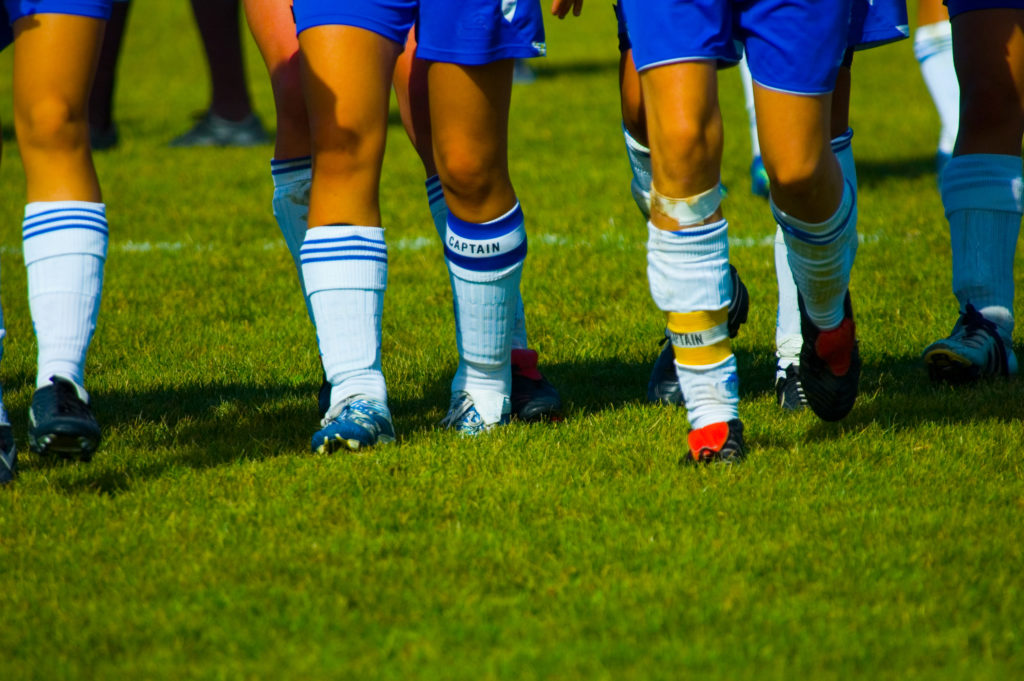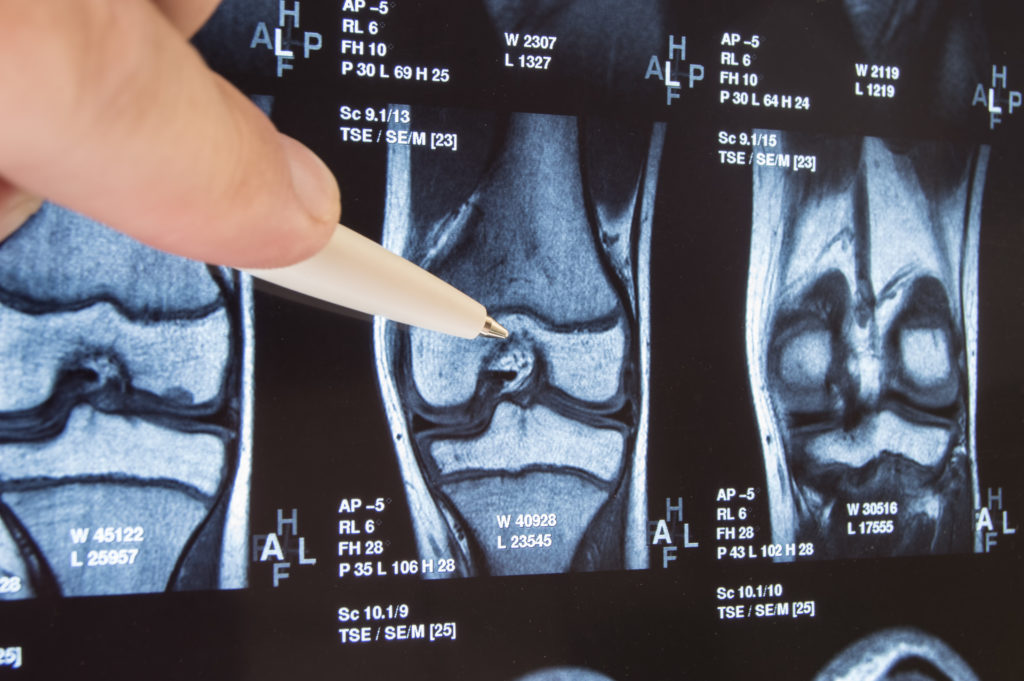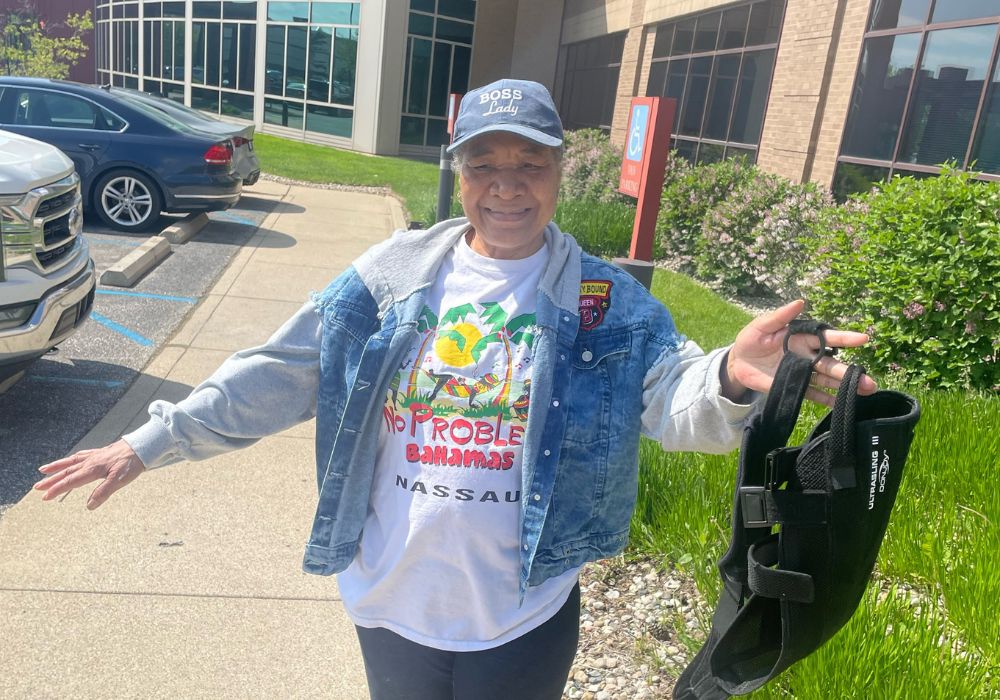THIS ARTICLE IS PART OF THE ULTIMATE GUIDE TO SPORTS MEDICINE
Soccer is on the rise in the United States as it ranks as the fourth most popular sport. According to a recent Gallup poll, soccer’s rising popularity has it closing in on the big three American sports: basketball, baseball and football.
However, playing soccer puts you at risk for an injury. Most soccer injuries involve the lower extremities of the body. Commons soccer injuries can result from sudden twisting movements, a collision or blow, a fall or incorrectly landing after a jump.

What is the most common injury for soccer players?
Learn more about the five most common soccer injuries and the risks of playing soccer below.
1. Ligament injuries of the knee
The twisting of your knee can lead to a ligament injury, which is one of the most common knee injuries in soccer. The two most frequent ligament injuries seen in the knee are anterior cruciate ligament (ACL) and medial collateral ligament (MCL) tears.
“The frequent twisting, pivoting, cutting and quick changing of directions in soccer can result in injuries to these ligaments,” said Dr. Michael Thieken, OrthoIndy sports medicine specialist. “ACL injuries typically occur as the result of a non-contact pivoting type movement.”
ACL injury symptoms may include:
- Knee swelling
- Knee pain
- Loss of full range of motion
- Discomfort when walking
- Tenderness
- The feeling of instability in the knee
An MCL injury is a sprain or tears to the medial collateral ligament (MCL). Also referred to as torn cartilage in the knee, a meniscus tear is one of the most common knee injuries among athletes. When an athlete squats and twists the knee, this can cause a tear.
“MCL sprains or tears can be either non-contact or contact, typically when another player collides with the side of the knee,” said Dr. Thieken. “The MCL and meniscus can be injured together as well.”
MCL injury symptoms may include:
- Swelling
- Pain
- Tenderness
- Difficulty moving the knee
- Bruising
- Feeling of instability
Find out more information on knee injury prevention and treatment.
2. Shin splints
Shin splints are due to stress across the tibia (shin bone). Typically, shin splints are the result of repetitive impact activity such as running or jumping on hard surfaces. You can increase your risk of developing shin splints by participating in activities or sports that occur on harder surfaces, having flat feet or abnormally rigid arches and exercising with improper or worn-out footwear.
Shin splint symptoms can include:
- Pain in the tibia or shin
- Shin is tender to the touch
- Pain is usually heightened during activity and relieved by rest
- Dull aching pain that occurs in the posterior medial tibia just below the mid-portion of the bone
“Shin splints typically improve with conservative treatment, which includes rest, ice and anti-inflammatory medications,” said Dr. Thieken. “Symptoms that do not resolve with this type of treatment warrant follow-up with a doctor to rule out a more significant problem, like a stress fracture.”
Find out more information about shin splint prevention and treatment.
3. Strains
A strain is an injury to a muscle or tendon and is often caused by overuse, force or stretching. Strains are often graded on severity.
- Grade 1 (pull): Mild, usually heals quickly
- Grade 2 (partial tear): Moderate, heals over a longer period of time
- Grade 3 (complete tear): Severe, may take months to heal
Symptoms of strains can include:
- Sudden sharp pain in the affected muscle
- Bruising or discoloration around the area
- Swelling
- Weakness in the affected muscle
Find out more information about strain injury treatment.
4. Sprains
A sprain is a twisting injury or tears to a ligament. Sprains most often affect the ankles, knees or wrists.
Sprain symptoms can include:
- Immediate ankle pain
- Swelling
- Bruising
- Tenderness to the touch
- Difficulty walking
Find out more information about sprain injuries.
5. Concussions
Although OrthoIndy doesn’t treat concussions, it’s a common and serious injury that can occur while playing soccer.
Concussion symptoms may include:
- Headache
- Confusion and lack of coordination
- Memory loss
- Nausea and vomiting
- Dizziness and sleepiness
- Ringing in the ears
- Excessive fatigue
If you experience a head injury, please go to a hospital emergency room or contact your current treating physician’s office for guidance.
Learn more about sports medicine treatment at OrthoIndy.
Schedule an appointment
Your well-being is important to us. Click the button below or call us to schedule an appointment with one of our orthopedic specialists. If your injury or condition is recent, you can walk right into one of our OrthoIndy Urgent Care locations for immediate care. For rehabilitation and physical therapy, no referral is needed to see one of our physical therapists.





